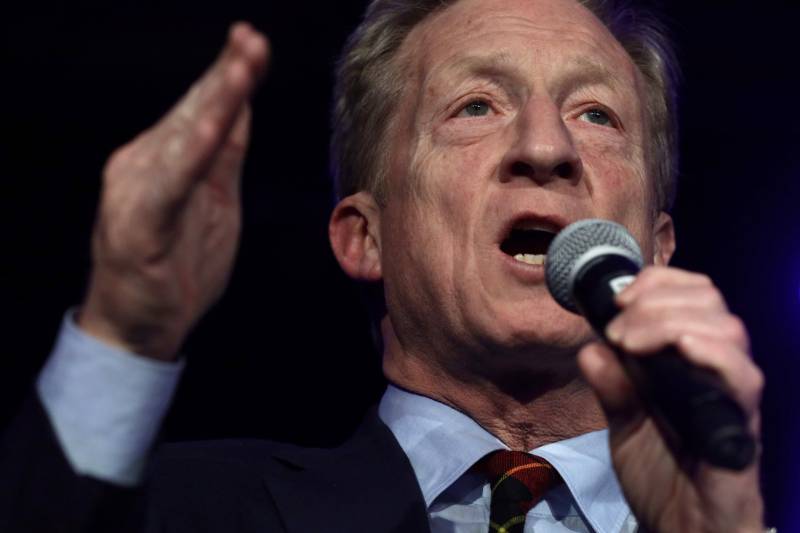‘If you give [corporations] the unlimited ability to participate in politics, it will skew everything because they only care about profits. You know, you look at climate change, that is people who are saying, ‘we’d rather make money than save the world.’ That is an amazing statement, and it’s happening today. And there are politicians supporting that.’ —Tom Steyer, July 2019
Been There
Tom Steyer rose to fame as the most prolific Democratic political donor, willing to spend tens of millions to elect candidates committed to action on climate change. But he has divulged little about why he decided to end a successful career managing a multibillion dollar hedge fund — with investments that included fossil fuel interests — to enter politics and the climate fight.
In a 2014 profile, he told Men’s Journal that he realized, “I really don’t want the highlight of my life to be my success as an investor.” His wife, Kathryn Taylor, said the couple became embarrassed in the mid 2000s that they were profiting from investments in oil companies while committing themselves to environmental issues. In 2012, Steyer stepped down from his role at the hedge fund, sold his personal fossil fuel assets, and got involved in electoral politics.

